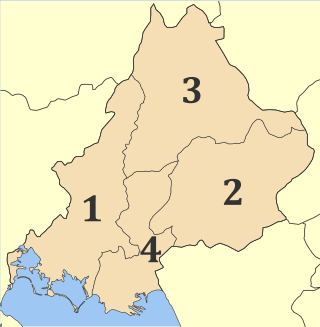
Arta is one of the regional units of Greece. It is part of the Epirus region. Its capital is the town of Arta.

The Athens School of Fine Arts (ASFA), is Greece's premier art school whose main objective is to develop the artistic talents of its students.

Greece competed at the 1980 Summer Olympics in Moscow, USSR. Greek athletes have competed in every Summer Olympic Games. Of the five nations that have been to every Summer Games, Greece was the only one to compete under its national flag at Moscow, as the other five and several other nations competed under the Olympic flag in protest of the USSR's involvement in the Afghan Civil War.
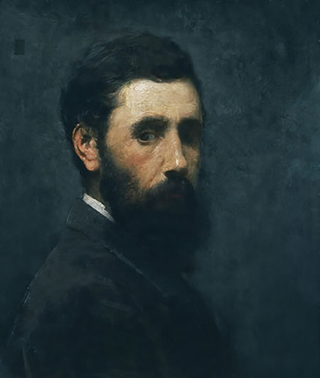
Nikiforos Lytras was a Greek painter. He was born in Tinos and trained in Athens at the School of Arts. In 1860, he won a scholarship to Royal Academy of Fine Arts of Munich. After completing these studies, he became a professor at the School of Arts in 1866, a position he held for the rest of his life. He remained faithful to the precepts and principles of the Munich School, while paying greatest attention both to ethnographic themes and portraiture. His most famous portrait was of the royal couple, Otto and Amalia, and his most well-known landscape a depiction of the region of Lavrio.

Modern Greek art is art from the period between the emergence of the new independent Greek state and the 20th century. As Mainland Greece was under Ottoman rule for all four centuries, it was not a part of the Renaissance and artistic movements that followed in Western Europe. However, Greek islands such as Crete, and the Ionian islands in particular were for large periods under Venetian or other European powers' rule and thus were able to better assimilate the radical artistic changes that were occurring in Europe during the 14th-18th century.

Greece competed at the 1948 Summer Olympics in London, England. Greek athletes have competed in every Summer Olympic Games. 61 competitors, 60 men and 1 woman, took part in 44 events in 10 sports.

The First Cemetery of Athens is the official cemetery of the City of Athens and the first to be built. It opened in 1837 and soon became a prestigious cemetery for Greeks and foreigners. The cemetery is located behind the Temple of Olympian Zeus and the Panathinaiko Stadium in central Athens. It can be found at the top end of Anapafseos Street. It is a large green space with pines and cypresses.
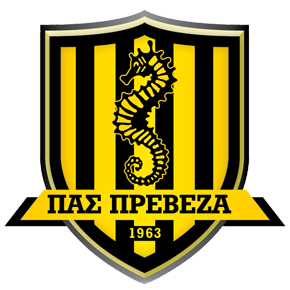
P.A.S. Preveza, Football Athletic Club of Preveza, is a football club based in Preveza in South-West Epirus, Greece. Club's emblem shows a hippocampus, which is the emblem of the city of Preveza. The colours of the club are yellow and black.
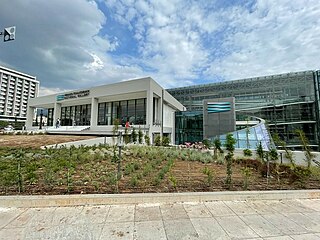
The National Gallery is an art museum located on Vasilissis Sofias avenue in the Pangrati district, Athens, Greece. It is devoted to Greek and European art from the 14th century to the 20th century.

The most important artistic movement of Greek art in the 19th century was academic realism, often called in Greece "the Munich School" because of the strong influence from the Royal Academy of Fine Arts of Munich, where many Greek artists trained. The Munich School painted the same sort of scenes in the same sort of style as Western European academic painters in several countries, and did generally not attempt to incorporate Byzantine stylistic elements into their work.
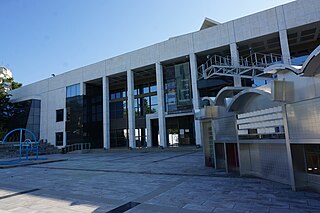
The Teloglion Fine Arts Foundation is an art museum located in Thessaloniki, Central Macedonia, Greece.

The Municipal Art Gallery of Ioannina is an art museum in Ioannina, Greece that has been open in its current building since 2000. The collection of over 500 items ranges from classical to modern paintings and sculptures.
The following is a history of the basketball players and head coaches that have competed for the Greece men's national basketball team, at all of the major international basketball tournaments.
The Deputy Prime Minister of Greece is the second senior-most member of the Greek Cabinet. Despite the English translation of the title, he does not actually deputize for the Prime Minister, rather it is a mostly honorific post for senior ministers, and is usually combined with another senior government portfolio or a coordinating role over several ministries. The post is not permanent, rather it is created on an ad hoc basis, usually for the leaders of junior parties in coalition cabinets, and may be held by more than one person at once.
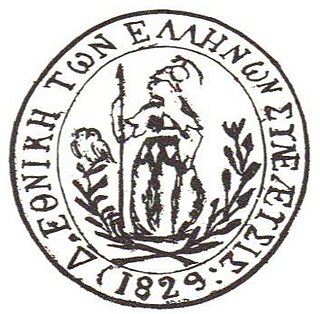
The Fourth National Assembly at Argos was a Greek convention which sat at Argos from 11 July to 6 August 1829, during the Greek War of Independence.
The Minister of State is a position within the Cabinet of Greece.
This page is based on this
Wikipedia article Text is available under the
CC BY-SA 4.0 license; additional terms may apply.
Images, videos and audio are available under their respective licenses.












